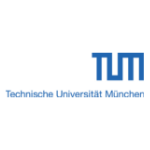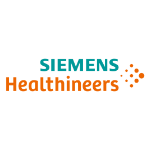Fighting breast cancer with workflow optimised ultrasound screening
This project seeks to integrate and innovative, large-area ultrasound transducer into the common mammography workflow, significantly improving the accuracy of standard breast cancer screening. The early detection afforded by this innovation remains the cornerstone in the battle against breast cancer, which will affect more than 10% of all women.
Origins
Ultrasound, normally only used as a follow-up to suspicious x-ray mammography findings, is costly, time-consuming and yields varied results. A large ultrasound transducer, able to image the entire breast at once and to work during the x-ray exam, would help. But a large transducer is difficult and costly to manufacture, and can interfere with x-rays. The piezoelectric micromachined ultrasound transducer offers a solution, which should become a standard breast exam tool.
Team
IMEC, a leader in semiconductor technology, developed the process to make piezoelectric micromachined ultrasound transducers (pMUTs). Together with Siemens Healthineers, one of the key suppliers for medical imaging equipment, this novel technology will be applied for breast imaging. Clinical expertise and insight is provided by the University of Heidelberg. The Technical University in Munich assists in investigating photoacoustic imaging with pMUTs.
The project
The goal of this initiative is to improve early stage detection of breast cancer using an innovation that makes it possible to integrate ultrasound imaging seamlessly into the common X-ray mammography workflow. Breast cancer can be diagnosed with higher sensitivity and specificity by a single examination that includes both x-ray and ultrasound, eliminating follow-up visits.
The FiBrUS system takes advantage of piezoelectric micromachined technology (pMUT) to create a larger transducer. Unlike standard ultrasound, which has a limited field and requires a time-consuming procedure with many images, the new system can scan the entire breast in under ten seconds and create a 3D image.
The pMUT technology promises several clinical benefits:
- pMUT arrays can be manufactured in a large area as processes are compatible with standard flat-panel display technology.
- It does not require error-prone manual processes that limit ultrasound images to small areas.
- pMUTs are very thin devices that can be integrated into the MAM device without interfering with the X-ray imaging process.
- No interaction between personnel and the device is required.
- The required compression time of the breast and resulting discomfort is kept to a minimum.
- The risk of motion artifacts between the X-ray and ultrasound image is reduced.
Impact
By incorporating ultrasound into the standard examination, this project will improve the gold standard of breast cancer screening, thereby countering a health problem that impacts one in ten women at one point in their lifetime. The innovation makes sophisticated screening less costly and therefore available to more women. This means more cancers can be detected earlier, which improves patients’ prognosis. And early detection also helps payers, because it makes for less costly treatment.
Why this is an EIT Health project
This project is in keeping with the EIT Health goal of improving healthcare through innovation. It is also aligned with the Focus Area of “Health Continuum Care Pathways” because it promotes better health delivery through an innovative solution that promises to improve the way Europeans handle the important issue of breast cancer screening.
Partners

CLC/InnoStars: Belgium-Netherlands
Partner classification: Business
IMEC - Interuniversity Microelectronics Centre
IMEC - Interuniversity Microelectronics Centre, Kapeldreef 75, 3001 Leuven, Belgien
Key Activities in Corporate Innovation
Med Tech, ICT, Diagnostics, Consumer products
Key Activities in Business Creation
Technology Transfer, Testing & Validation






CLC/InnoStars: Germany
Partner classification: Education, Research, Tech Transfer, Clusters, Other NGOs, Hospital / University Hospital
Partner type: Core Partner
TUM is one of Europe's top Universities. It is committed to excellence in research and teaching, interdisciplinary education, and the active promotion of promising young scientists.
Technische Universität München (TUM)
Technische Universität München (TUM), Arcisstraße 21, 80333 München, Germany
Key Activities in Research and Developement
Biomedical engineering, Life Sciences, Social sciences / health economics, Clinical research
Key Activities in Business Creation
Incubation, Technology Transfer
Key Activities in Education
Entrepreneurship training, Technical faculties, Medical faculties






CLC/InnoStars: Germany
Partner classification: Business
Partner type: Core Partner
Siemens Healthineers is one of the world's largest suppliers of technology to the healthcare industry and a leader in medical imaging, laboratory diagnostics and healthcare IT.
Siemens Healthineers
Siemens Healthineers, Henkestraße 127, 91052 Erlangen, Germany
Key Activities in Research and Developement
Biomedical engineering, Life Sciences
Key Activities in Corporate Innovation
Med Tech, ICT, Diagnostics, Imaging
Key Activities in Social Innovation
Healthcare provision
Key Activities in Business Creation
Incubation, Finance & Investment, Business coaching, Testing & Validation
Key Activities in Education
Entrepreneurship training, Healthcare professional education/training


